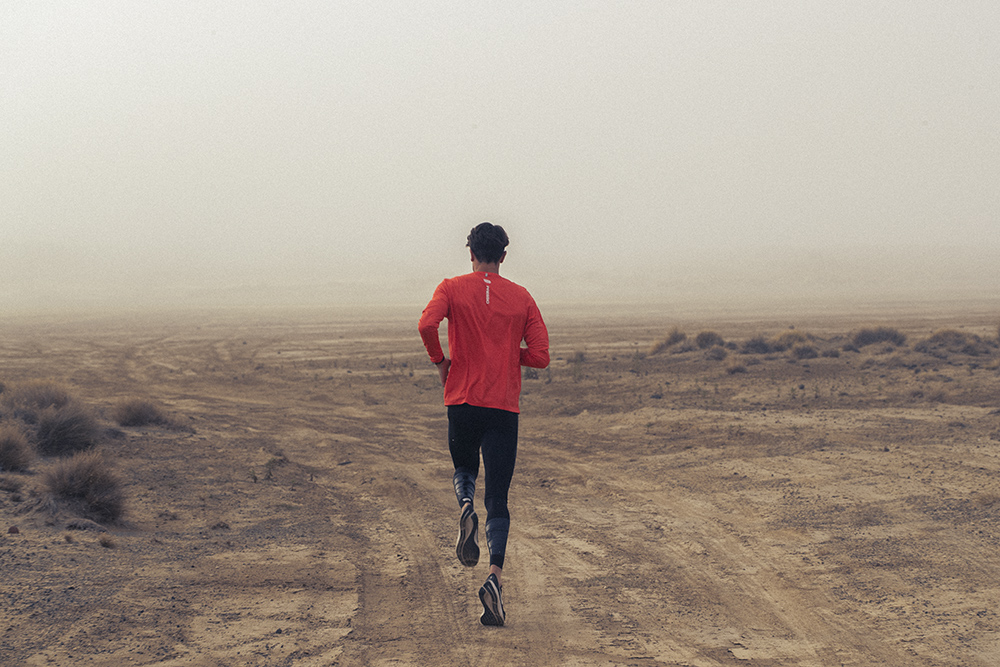
Dress To Compress: Introducing Pressio
Meet Jamie Hunt, former globally-ranked triathlete and activewear entrepreneur whose CV includes the successful launch of runaway success (pun intended) 2XU. Like any competitor, Hunt is always out to beat his personal best, and so after selling 2XU three years ago, he turned his attention to a new project. Seeking to create a brand which fused sustainable credentials and performance technology, it was at this meeting point that Pressio was born. We chatted to the founder to learn more about compression technology and Pressio’s revolutionary point of view.

Hi Jamie! Please tell us a bit about yourself. Where did you begin your journey in sport and how did you get to where you are now?
I grew up in New Zealand, and started doing triathlons when I was 13 years old. I was a world junior champion, eventually ranking third in the world. When I stopped doing triathlons I started working in a triathlon clothing business, where I found my passion for textiles and developing activewear products. I then went and co-founded the brand 2XU, which became a global player in the high-end performance space.
When did you found Pressio and why? What does that offer that’s different from what you were doing with 2XU?
When you become a certain size, you become this huge business where it takes a lot of effort to transform and progress in new directions. In a small brand like Pressio, we can do things very quickly. For example - we brought out the world’s first biodegradable sportswear collection in about eight weeks, whereas in a bigger brand, it would take about two years to bring it to market.
As the brand grows, how will you maintain that speed and flexibility?
There’s always going to be a place in our business to bring things to market quickly, in what I call our “fast track programme”. I’m not going to rest on my laurels if a new invention comes out. I want to jump on it really fast - that’s just who I am as a competitor.

It’s interesting, there’s definitely a synergy between the way you operate as a business and your sporting background. For those not familiar with compression fabrics or the science behind them, can you explain what compression is and why it’s so important?
I think compression is one of the greatest innovations of sportswear in the last 20 years. If you get the compression fabrication right, you can harness qualities like increased recovery, increased support against getting muscle tears, much better guards against overuse injuries. Plus, after your workout you’re going to recover much more quickly because of the increased blood flow. We’ve also noticed you get increased power when it comes to lifting weights. There are so many amazing benefits we keep coming across in our testing and research.
Compression isn’t just a pair of well-fitted tights. It has to offer the amount of power to give you the right amount of support, and it must be graduated power. We spend a lot of time in labs testing our products, ensuring we have the right amount of power in the right areas.
Would you recommend the products for beginners, or would you say these products are more for people who are already very deeply embedded in sport?
I would say even more so for beginners. When you’re a beginner, your muscles often aren’t used to increased workouts, so we definitely help support athletes that are just getting started, because that’s where you incur the most injuries and soreness.
When it comes to sustainability, can you explain your approach?
We view it as four key parts which we look at, starting with the yarns. Being recycled is extremely important. Also, biodegradability. We’re seeing 20-30 times faster biodegradability than what you’d see in the normal synthetics. Another side of it is the whole dyeing process - we’re pushing really hard to make as many of our products as dye-free as possible. The other part to it is applications - so in our moisture-wicking we do it with how we grade the filaments, rather than add wicking chemicals into our products, and we try to use natural antibacterial in our fabrics. The last part of it is microfiber shedding, so we are working on new ways to twist yarns to eradicate microfibers going through the laundry into the ocean. Then for our supply chain, our factory is 70% solar-powered and we’re trying to make it 100% solar-powered within the next 12 months.

For those of us stuck in an exercise slump, or simply seeking a bit of motivation, what tips would you offer?
Definitely have a goal. I personally try to do one triathlon a year.
Small goals, then!
Yep! (laughs). Definitely put a goal on the calendar - make sure it’s not too far ahead of where you are, and if it is, put little goals along the way. Say, for example, you’re going to do a half marathon, sign up for a 5k in eight weeks time and maybe sign up for a marathon in another eight weeks time. It’s my 50th birthday in two months’ time, so I’m doing a 50 kilometer run on that day.
Wellness is a popular buzzword at the moment. What does it mean to you?
Obviously physical health has always been important for me, but equally, mental health is probably an even harder subject to broach. I have been through depression and anxiety in my life, and being the person I am, who’s very driven and focused, at times I’ve got burned out. For me nowadays, mental wellbeing is more important than physical wellbeing. Eat well, sleep well, work out well and spend time with people who lift you up.
Interview by Georgia Graham
Related Reading:
The Checklist: Elevated Activewear
Staying Active With Joe Harper
On The Road With… Pas Normal Studios
See All Stories: